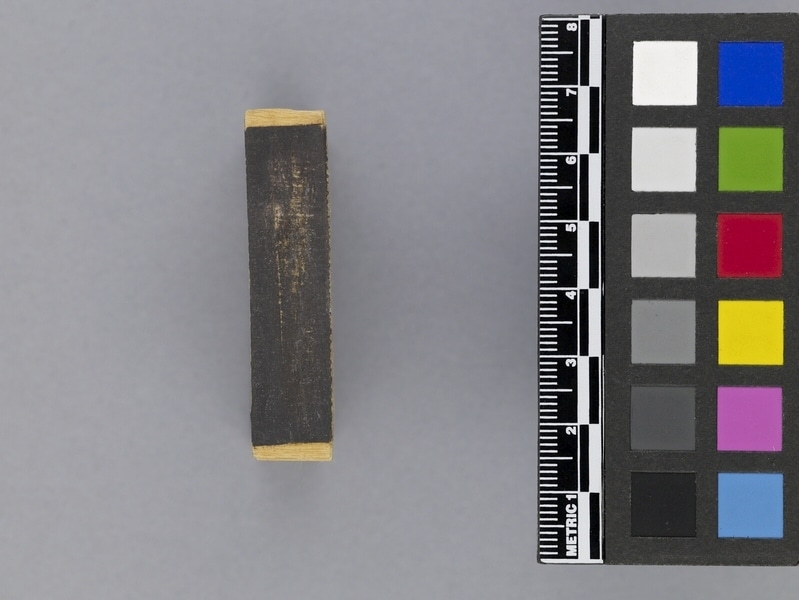Box Item Number: Eg315 a-b from the MOA: University of British Columbia



Description
Part a: Exterior box. One length of thin wood, bent to form four sides. Brown gritty surface on two longest sides. Blue paper covers base. Top has paper illustration. Part b: Interior box. Has wood sides, paper base, and is covered by blue paper. Slides out either end of exterior box. Top illustration of exterior box is female with red-trimmed gown and flowing black hair. She is seated on swing, each hand holding onto one swing rope. Image on diagonal and in profile, facing to right. Background: palm trees on right; green grass at base. At top, black lettering states: 'The Swing'. At top and base, black bands with red lettering state: 'La Hamaca', 'Made in Sweden'.
History Of Use
Indian popular religious prints have been published for nearly a century, first by German presses, later by Indian ones. The prints may take the form of calendars, posters, or simply images. They are also used as book covers, cards, and packaging labels. The style of the representations is European. In the beginning they were Hindu images, but are now acquiring elements both of folk art and a romantic secularism. It is a living art currently influenced by the movie industry and non-Hindu religions. The images are a vehicle for advertising and are also used for religious purposes. This packaging for safety matches was made in Sweden for distribution in India.
Cultural Context
Popular secular art.
Item History
- Made in India during 1920
- Collected between 1974 and 1982
- Owned by Stephen Inglis before January 1983
- Received from Stephen Inglis (Donor) during January 1983
What
- Name
- Box
- Identification Number
- Eg315 a-b
- Type of Item
- box
- Material
- paper, adhesive, silicate stone and balsa wood
- Manufacturing Technique
- lithographed, cut and glued
- Overall
- height 0.43 in, width 1.5 in
Who
- Culture
- South India
- Previous Owner
- Stephen Inglis
- Received from
- Stephen Inglis (Donor)
Where
- Holding Institution
- MOA: University of British Columbia
- Made in
- India
When
- Creation Date
- during 1920
- Collection Date
- between 1974 and 1982
- Ownership Date
- before January 1983
- Acquisition Date
- during January 1983
Other
- Condition
- good
- Accession Number
- 0857/0170 a-b